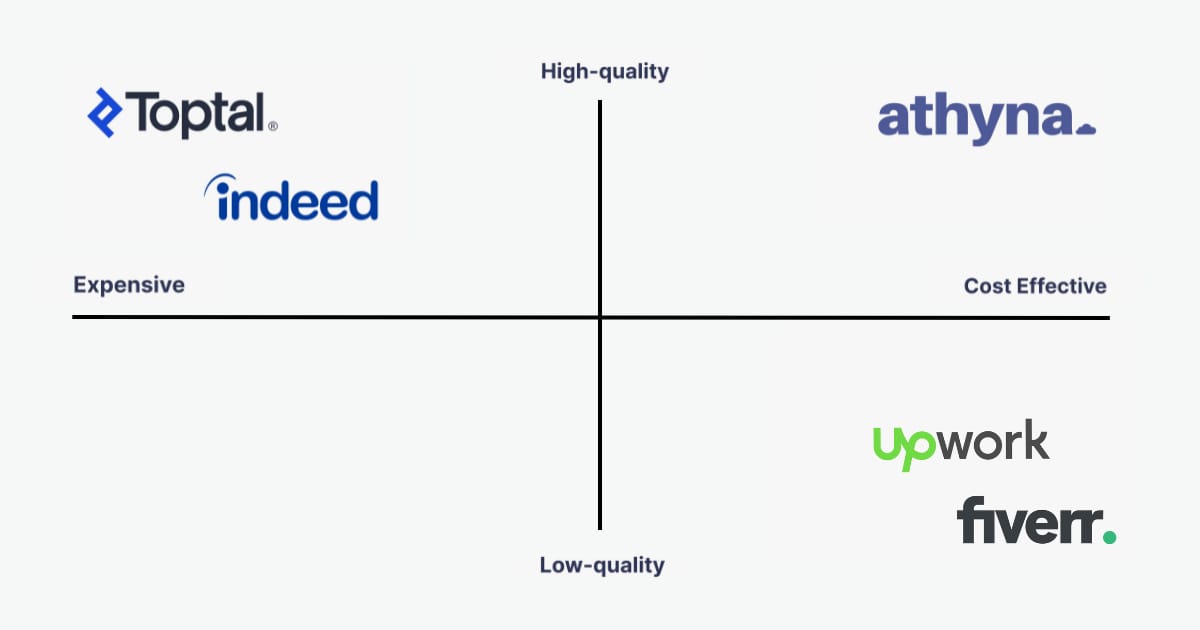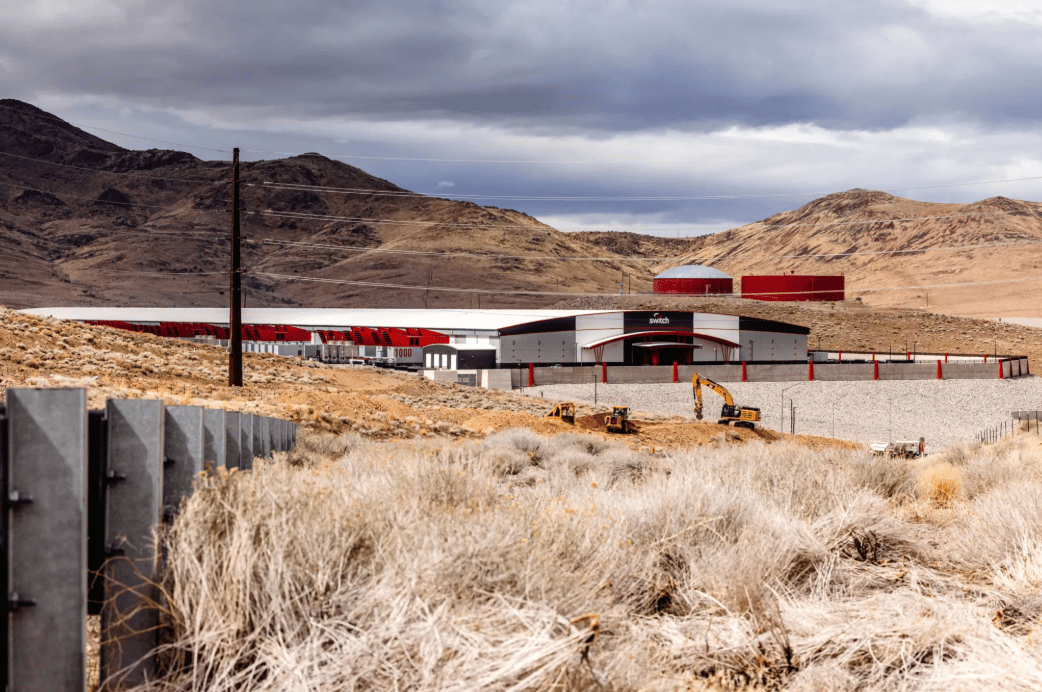- Roko's Basilisk
- Posts
- Space Clouds Incoming
Space Clouds Incoming
Plus: Meta’s AI job cuts, Snap’s Lens update, and GM teams up with Google.
Here’s what’s on our plate today:
🛰️ Data centers launch into orbit to power AI growth.
⚡ Snap’s AI lens, Meta’s AI cuts, GM goes Google.
💡 Tools to test, build, and automate your weekend stack.
🗳️ Are space-based data centers genius or overengineered moonshots?
Let’s dive in. No floaties needed…

Save $80,000 per year on every engineering hire.
Tired of the slow, expensive grind of hiring engineers?
There’s a better way. Athyna helps you build high-performing teams—fast, affordable, and without the hiring headaches.
Here’s how:
🤖 AI-powered matching connects you with talent tailored to your needs.
⚡ 4 days from brief to interviews.
💸 Save up to $80k per hire with top LATAM engineers.
Speed, precision, and serious savings—no compromises
👉 Ready to change the way you hire?
*This is sponsored content

The Laboratory
The space data center race
When Plato, the Greek philosopher, said that "our need will be the real creator", he did not attribute human creativity to one singular drive. Rather, his dialogues suggested that the urge to create stems from a deeper longing for immortality and a philosophical pursuit to mirror eternal truths. From Plato’s philosophical longing for permanence to the modern quest for computational immortality, human creativity continues to chase the infinite.
In the modern context, while his words hold meaning, human creativity has largely been driven by the desire to improve the quality of life and push the bounds of what was earlier considered fiction. Modern Artificial Intelligence models are a remarkable example of this pursuit. Fictional stories about robots capable of emulating human speech and generative abilities are no longer a distant dream.
However, while AI is now a reality, ensuring that it stays online and continues to scale is a major challenge. And these require collective human intelligence and creativity. To keep AI running, humanity has to figure out how to power the data centers that make these systems possible. The challenge is to do so without upsetting the planet’s delicate ecological balance. Humanity's solution to this problem, as it has been in the past, is to look to the skies. This time, space to be precise.
The need for data centers in space
The idea of data centers in space stems from the need for computing power, which has become a critical resource amid the AI boom. Compute resides in vast data centers packed with servers that operate nonstop to power the foundation models and machine learning systems that drive AI. The combination of hardware, processors, memory, storage, and energy required to keep them running is known as compute power.
According to McKinsey, global data centers will need an estimated $6.7 trillion in investment by 2030 to keep up with rising demand for computing power. Of this, about $5.2 trillion will go toward facilities built for AI workloads, while another $1.5 trillion will be needed for traditional IT operations.
To meet this growing demand, companies across the compute power ecosystem are trying to balance the urgency of rapid expansion with careful, strategic spending. And if Amazon founder Jeff Bezos is believed, gigawatt-scale data centers will be built in space within the next 10 to 20 years. And he is not the first person to suggest that outlandish idea.
According to a blog post from IBM, Lumen Orbit, a Y Combinator-backed startup, has raised more than $10 million to build space-based data centers. Originally founded in 2024 by Philip Johnston (CEO), Ezra Feilden (CTO), and Adi Oltean (Chief Engineer), the company’s vision is to build a network of data centers in space (i.e., satellites) that can do heavy AI/ML and data processing in orbit instead of downlinking all raw data to Earth.
The company plans to use GPUs on board satellites that will help reduce bandwidth, latency, and cost. These satellites, numbering hundreds, will be deployed in low Earth orbit, around 315 Km, eventually forming orbital things like Starlink. In February 2025, the company rebranded to Starcloud in a bid to avoid confusion with Lumen Technologies, a separate firm in the fiber, data center, and telecom space.
According to a report from the BBC, Lonestar Data Holdings is another company working on the idea. The company has so far successfully tested a tiny data center the size of a hardback book. It was launched to the Moon on the Athena Lunar Lander from U.S. space exploration firm Intuitive Machines.
Why space?
According to a study by Thales Alenia Space on behalf of the European Commission, it is technically, environmentally, and economically feasible to launch data centers into orbit in a way that is less energy-intensive than having data centers on the ground.
The allure of establishing data centers rests on the fact that there is a lack of available power in most metropolitan markets and that appropriate land with access to a strong enough power supply is also increasingly difficult to find or secure. The access to sunlight, for solar power, also provides the opportunity to reduce stress on existing infrastructure. It is also being pitched as a viable alternative for nuclear energy, a source that has gained increasing traction since the launch of AI chatbots.
However, while researchers say that data centers in space may help solve the problem of rising costs of developing and deploying AI models, not everyone agrees.
The challenges
According to Dr Domenico Vicinanza, associate professor of intelligent systems and data science at Anglia Ruskin University in the UK, there are numerous big hurdles before space-based data centers can be a viable proposition.
He says that even with the contribution and advancement of companies like SpaceX, launching hardware into orbit remains extremely expensive, and that each kilogram sent into space costs thousands of dollars. He points to the need for infrastructure to protect, power, and cool them as major hurdles, stating that all of these will add up in weight and complexity of such projects.
Cooling data centers in outer space is another challenge, since conventional cooling systems do not work in space.
Add to this the problem of maintenance, and the idea of data centers in space becomes a lot more challenging.
Space weather can damage electronics, while the ever-increasing quantity of space debris puts the physical hardware at risk. And a big equipment failure will be difficult to fix, owing to the costly human missions that will potentially increase downtime and costs.
So while companies like Starcloud aim to launch their first orbital data center in August 2025, followed by a more powerful version in 2026, it is only once these systems are online that their true nature will surface.
Solving AI’s energy crisis, one orbit at a time
Data centers have been around since the 1950s; however, their true strength was uncovered in the early 2000s when cloud computing became mainstream. With the advent of AI, the data centers have gone from being an important part to being part of the critical infrastructure needed to maintain the flow of data around the globe.
While governments are planning to spend billions of dollars on their construction, space provides an alternative that can help reduce the stress of running AI systems on humans who inhabit the planet.
The creation of data centers in space is then necessitated by the need for more robust infrastructure without upending the delicate ecological balance of the planet. However, without a thorough assessment of the impact of multiple launches, the infrastructure needed to build and develop rocket ships and human missions to space that will make this dream possible, the aim is far from true.
Plato believed that need is the mother of invention. In the age of AI, that need may push humanity beyond its own atmosphere.
TL;DR
The AI boom is driving an unprecedented need for compute, forcing companies to explore data centers beyond Earth.
Startups like Starcloud and Lonestar Data Holdings are testing orbital and lunar data centers to reduce energy strain and latency.
Advocates say space centers could solve power and land shortages using solar energy, but skeptics point to cost, cooling, and maintenance hurdles.
As AI’s energy appetite grows, space may offer a lifeline—but only if economics, physics, and politics align.


Friday Poll
🗳️ Do you think building data centers in space is the future of AI infrastructure? |

What if you could lower your tax bill and stack Bitcoin at the same time?
By mining Bitcoin with Blockware, you can. Bitcoin Miners qualify for 100% Bonus Depreciation. Every dollar you spend on mining hardware can be used to offset income in a single-tax year.
Blockware's Mining-as-a-Service enables you to start mining Bitcoin without lifting a finger.
You get to stack Bitcoin at a discount while also saving big come tax season.
*This is sponsored content

Headlines You Actually Need
Snapchat opens up AI Lens: Snapchat’s first open-prompt AI Lens is now free in the U.S., letting users generate custom AR experiences.
GM leans deeper into Google AI: GM is expanding its partnership with Google to bring more advanced AI into vehicle voice, navigation, and safety systems.
Meta trims AI team by 600+: Meta is cutting hundreds of AI jobs as part of a broader restructuring to speed up internal development cycles.
Weekend To-Do
Heurist: A personal research OS for structured thinking; organizes web findings and AI insights seamlessly.
Metrotech: A new AI monitoring platform that tracks compute usage, carbon impact, and infrastructure health in real time.
Stitch: Generate and refine UI designs instantly with natural language; perfect for rapid weekend prototypes.

Rate This Edition
What did you think of today's email? |





